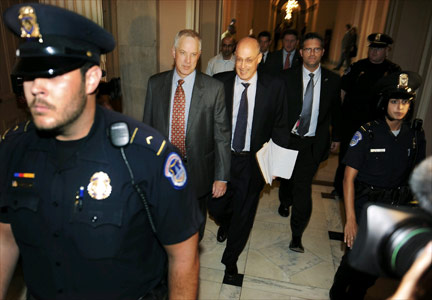World financial crisis
Explainer - The US financial bailout plan
Article published on the 2008-09-29 Latest update 2008-09-29 14:48 TU
US lawmakers announced late Sunday that they had agreed to the wording of the 700 billion dollar (485 billion euro) bailout plan, which has been sent to Congress for approval Monday. President George Bush and House Leader Nancy Pelosi called on Congressmen and Senators to pass the bailout plan swiftly, after a week of tense negotiations to finalise the deal.
The Emergency Economic Stabilization Act of 2008 is the biggest US government intervention in the economy since the great depression. Taxpayers' money will be used to buy up bad debt from private banks and investment houses in order to avoid a chain reaction of defaults which could send the world economy reeling.
The deal ballooned from the three-page document submitted by Treasury Secretary Henry Paulson a week ago, to more than 100 pages, finalised Sunday night.
The rescue continues to face opposition after a week of intense negotiations, despite a number of significant changes:
- Only 250 billion dollars will be released to Paulson immediately, to be followed by another 100 billion if the President deems it necessary, with the final 350 billion subject to another congressional approval. The total sum of money available is still capped at 700 billion dollars.
- The government will take a stake in the companies who participate in the plan. This means that these companies will share any future profits with taxpayers.
- The president will be required to recuperate any losses to the taxpayer resulting from the programme. Democrats argued for a tax on financial institutions, but the final draft left this question open for the next president to decide.
- In some cases, firms that receive funds will have to agree to a cap on executive pay and bonuses, and may require unearned bonuses to be returned.
- Homeowners facing foreclosure will receive protection and may have their mortgages renegotiated with government help.
- The use of funds will have multiple layers of oversight: a congressional board charged with following the progress and effectiveness of the spending and a special inspector general to monitor for waste, fraud and abuse.
US/World economy
Finance bailout to be worth 700 billion dollars, blame game begins
2008-09-21 10:54 TU










